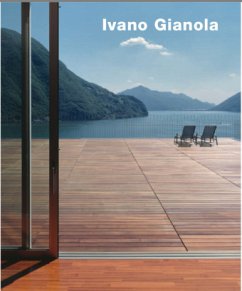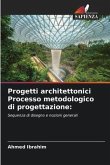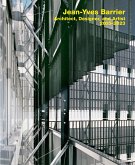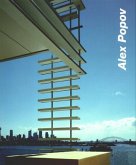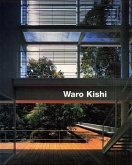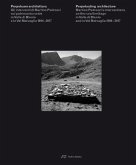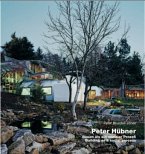Ivano Gianola is one of the most important exponents of the socalledTicino School. This developed in the early 1970s as a looseassociation of architects who thought in related ways. At the time,their ambition was to set radical alternatives of a powerfully symbolicnature against the increasing destruction of the environmentby new building in Ticino.What made Gianola's buildings different from others of the TicinoSchool from the outset was the subtle way they were boundinto their context, and their precise craftsmanship. The latter meantthat building after building, especially in terms of interior finish andthe coherence of all the details, became real total works of art. Soit is hardly surprising that Gianola created the most beautiful livingspaces in Ticino, in the best Arts-and-Crafts tradition.This craft precision, combined with high formal and aestheticvalues, was probably also crucial to the fact that in the 1990s Gianolawas commissioned to design a series of public and privatebuildings abroad. Thus his conversions and new buildings for theBayerische Vereinsbank in Schäfflerhof in Munich made a majorcontribution to the new concept for the well-known Fünf Höfe site.But Gianola's greatest success so far was winning an internationalcompetition for redesigning the extensive site around theruins of the former »Palace« luxury hotel in Lugano. Here a theatreseating over 1200 people, a modern art museum, housing andoffices, a municipal park and a new section of the lakeside promenadewill be created over the next five years. This is the biggestproject that the Canton of Ticino has ever awarded, and it will havefound an appropriate architect.This first publication of the complete works of Gianola givesthe latest of the leading protagonists of the Ticino School a monographof his own.Katia Accossato studied architecture in Milan and Venice. Shepractises in Mendrisio and teaches at the Accademia di Architetturadi Mendrisio and at the Fachhochschule Liechtenstein.NicolaProbst studied architecture in Lugano and Berkeley. He practisesin Lugano and teaches at the Accademia di Architettura di Mendrisio.Frank R. Werner is director of the Institut für Architekturgeschichteund Architekturtheorie at the Bergische Universität inWuppertal. He studied painting, architecture and architectural historyin Mainz, Hanover and Stuttgart.
Hinweis: Dieser Artikel kann nur an eine deutsche Lieferadresse ausgeliefert werden.
Hinweis: Dieser Artikel kann nur an eine deutsche Lieferadresse ausgeliefert werden.

